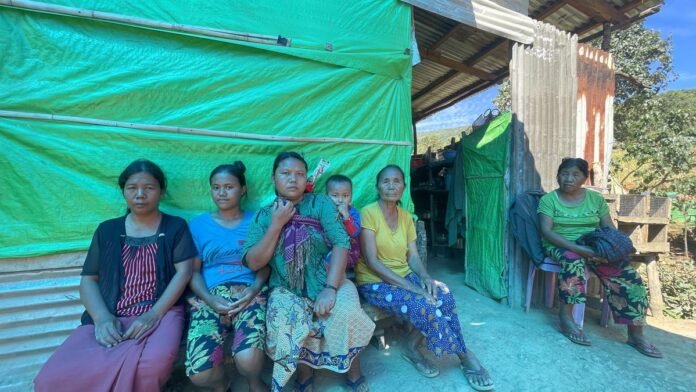The Mizoram government will begin a biometric data drive in Mizoram this July to register over 35,000 Myanmar refugees. This initiative aims to enhance aid distribution, track refugee movements, and improve security.
Officials from the state’s Home Department will lead the drive. They plan to record personal details, fingerprints, and iris scans of refugees who fled military violence in Myanmar since 2021.
Read More: Assam CM Inaugurates Aqua Tech Park
Thousands of Refugees Seek Shelter
More than 35,000 people, mainly from Myanmar’s Chin community, have taken shelter in Mizoram. They entered through the state’s long, porous border with Myanmar. These refugees are now living across districts like Champhai, Lawngtlai, and Siaha.
Since their arrival, Mizoram’s government has offered them food, shelter, and education. Churches and NGOs have also provided relief. Despite limited resources, the state maintained a strong humanitarian approach.
The upcoming biometric data drive in Mizoram will be the first formal step to register them officially.
Purpose Behind the Biometric Drive
The drive will help identify and support all refugees using a secure digital system. Officials will collect photographs, fingerprints, and iris scans from everyone aged five and above.
This data will help streamline aid distribution. It will prevent duplication and allow planners to deliver health, food, and housing support more effectively.
Security agencies also view the drive as a way to prevent illegal entry and identity misuse. The government wants to ensure that non-citizens don’t access Indian benefits fraudulently.
State and Centre: Different Approaches
The Centre had asked northeastern states to carry out biometric registration of all Myanmar refugees. However, Mizoram took time to agree. Chief Minister Zoramthanga stressed that the Chin refugees are part of the larger Mizo ethnic family. He urged the Centre to respect the state’s cultural and humanitarian ties.
After several meetings, Mizoram agreed to launch the biometric data drive in Mizoram. But the state clarified that the data will not be used to deport refugees.
Preparations are already underway. The Home Department has set up mobile teams, trained officers, and gathered technical equipment to begin the work smoothly.
Local Groups Offer Support
Groups like the Young Mizo Association and several church bodies have agreed to help with the drive. They will inform refugee communities and build trust to ensure smooth cooperation.
Officials believe the support of these groups will be critical. Refugees often fear deportation or arrest, so the state assured them that the process is only for identification and aid management.
Community leaders welcomed this assurance. Many believe the drive will bring dignity and recognition to people who currently live without identity documents.
Logistics and Challenges
The biometric data drive in Mizoram faces several challenges. Many refugee settlements are located in remote, hilly regions. These areas have poor internet access and difficult roads.
To solve this, officials plan to use mobile kits and solar-powered devices for data collection. Backup generators will also be available in case of power issues.
Language barriers could create problems too. While Chin and Mizo people share roots, there are many different dialects. Translators will assist teams during the registration process.
Privacy and Data Safety
The state has promised that all personal data will be stored securely. It will not be shared without proper legal clearance. Officials said they aim to protect people, not punish them.
Legal experts have called for transparency. They urged the government to give documentation to refugees after registration. Many believe this can help them access education, healthcare, and local jobs.
The government is also considering issuing refugee ID cards for future use, but no final decision has been made.
A Model for the Northeast
Mizoram may become a role model for handling refugee registration with sensitivity and order. If the biometric data drive in Mizoram succeeds, similar drives may begin in Manipur and Nagaland.
The Centre is watching the initiative closely. Officials have hinted at possible funding support to expand the project in the future.
International organizations like UNHCR may offer technical and humanitarian aid once the process begins.
Looking Ahead
Mizoram will begin the biometric drive in July and hopes to complete it within three months. Officials expect better planning, stronger security, and smoother aid delivery once the refugee data is compiled.
Community leaders are optimistic. They say the drive can bring order to a difficult situation and ensure that refugees receive support in a dignified way.
By launching the biometric data drive in Mizoram, the state is taking a bold step toward balancing compassion and responsibility. Refugees will receive better aid, and officials will gain accurate data to manage future challenges.
Mizoram has shown how a small state can lead with both heart and clarity. As the drive begins, it sends a strong message: even in crisis, governance can remain humane and just.
Read More: Mizoram CSR Development Push Led by CM Lalduhoma



